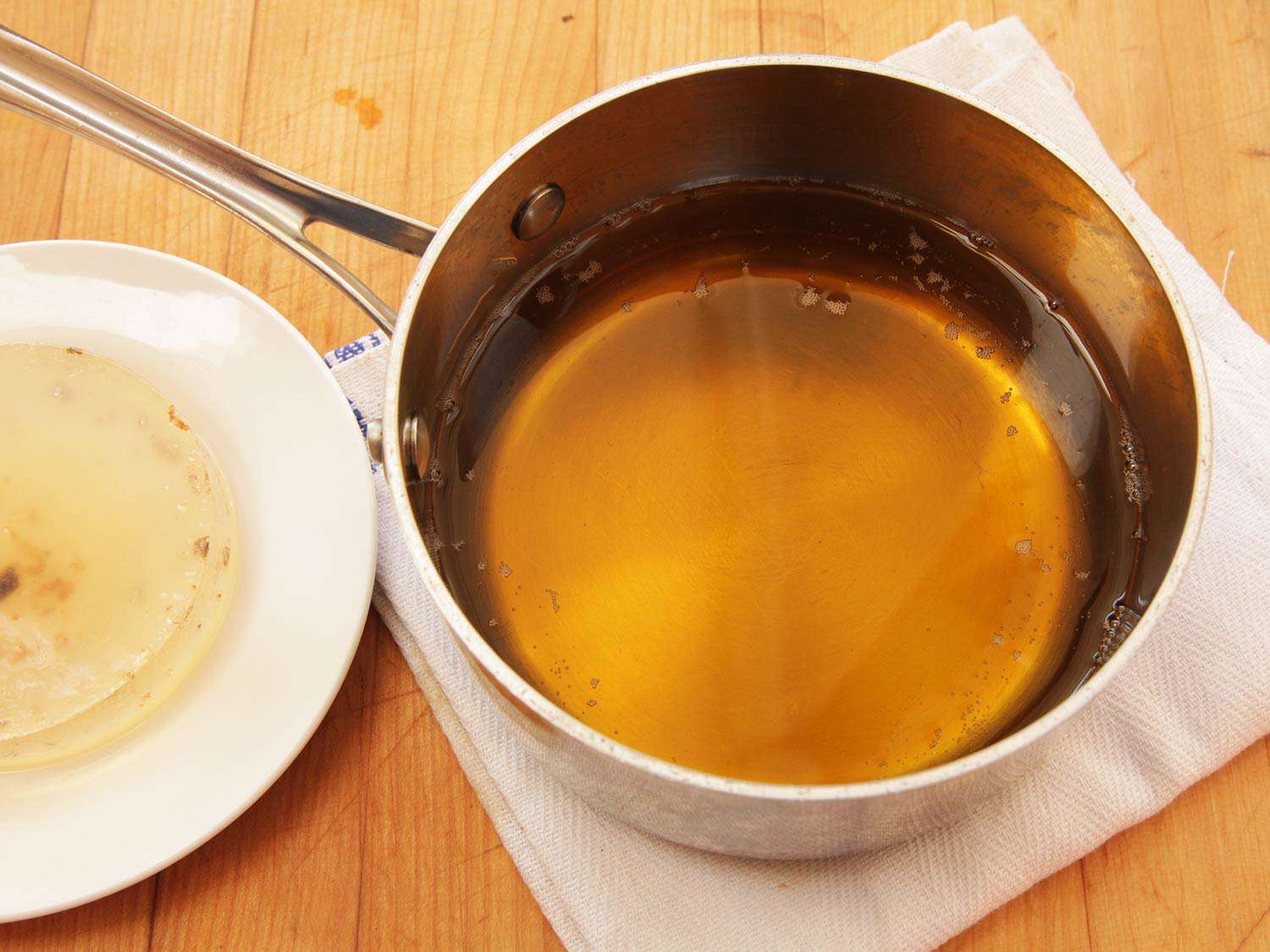

Articles
How To Store Fry Oil
Modified: December 7, 2023
Learn effective methods for storing fry oil to ensure its longevity and quality. Discover expert advice and tips in our informative articles.
(Many of the links in this article redirect to a specific reviewed product. Your purchase of these products through affiliate links helps to generate commission for Storables.com, at no extra cost. Learn more)
Introduction
Deep frying is a popular cooking technique used in many households and commercial kitchens. Whether you’re frying chicken, French fries, or other delicious treats, one essential aspect of deep frying is the oil used. Fry oil plays a crucial role in the cooking process, delivering flavor, texture, and ensuring even heat distribution.
However, once you’re done with the frying, what do you do with the leftover oil? Properly storing fry oil is of utmost importance to preserve its quality, maintain its flavors, and ensure its safe use for future frying endeavors.
In this article, we will explore the significance of storing fry oil correctly and provide you with essential factors to consider before storing it. We will also guide you through the steps to store fry oil effectively, share best practices to prolong its shelf life, and highlight common mistakes to avoid. So let’s dive in and learn how to store fry oil like a pro!
Read more: How To Store Frying Oil
Importance of Properly Storing Fry Oil
Properly storing fry oil has numerous benefits. Here are a few key reasons why it is crucial to handle fry oil with care:
1. Preserving Flavor: Storing fry oil correctly helps maintain the flavors and aromas of the fried foods. Fresh and properly stored oil ensures that your next batch of fried treats tastes as delicious as the first.
2. Cost Efficiency: Cooking oil can be expensive, especially if you use high-quality oils. By storing fry oil properly, you can reuse it multiple times without compromising on taste or quality, resulting in cost savings.
3. Reducing Waste: Proper storage of fry oil allows you to reuse it, minimizing waste and helping the environment. Improperly stored oil may spoil quickly, leading to unnecessary disposal and environmental impact.
4. Safe Consumption: Storing fry oil correctly helps prevent the growth of bacteria and contamination, ensuring the safety of the oil for future use. Consuming rancid or contaminated oil can lead to gastrointestinal issues.
Now that we understand the importance of proper fry oil storage, let’s explore the factors to consider before storing fry oil effectively.
Key Takeaways:
- Properly storing fry oil is crucial for preserving flavor, reducing waste, and ensuring safe consumption. Follow best practices to maintain oil quality and enjoy cost-effective, delicious fried dishes.
- Avoid common mistakes like storing hot oil and neglecting regular inspections to prolong the shelf life of fry oil. Proper storage contributes to flavorful, safe frying experiences and environmental sustainability.
Importance of Properly Storing Fry Oil
Properly storing fry oil is crucial for maintaining its quality, flavor, and safety. Here are some key reasons why it’s important to handle fry oil with care:
1. Preserving Flavor: One of the main benefits of properly storing fry oil is preserving the flavors of your favorite fried foods. Fresh, well-maintained oil ensures that each batch of fries, chicken tenders, or onion rings tastes as delicious as the first. When oil is not stored correctly, it can become rancid or absorb unwanted smells and flavors, resulting in unsatisfactory fried dishes.
2. Cost Efficiency: Cooking oil can be a significant expense, especially if you use high-quality oils. By properly storing fry oil, you can prolong its life and reuse it multiple times without compromising taste or quality. This allows you to save money by using the oil for subsequent cooking sessions instead of disposing of it after a single use.
3. Minimizing Waste: Improperly stored oil can quickly spoil, leading to unnecessary waste. By practicing proper storage techniques, you can extend the shelf life of fry oil, reducing the amount of oil that needs to be discarded. This not only helps minimize waste but also contributes to environmental sustainability.
4. Ensuring Food Safety: Proper storage of fry oil is essential to prevent the growth of harmful bacteria and ensure food safety. When oil is exposed to air, heat, and moisture, it becomes a breeding ground for bacteria, posing a risk to your health. Storing fry oil in the right conditions helps reduce the chances of bacterial growth, keeping your fried foods safe for consumption.
5. Maintaining Nutritional Value: Fry oil contains essential nutrients such as fat-soluble vitamins and fatty acids. By storing the oil properly, you can preserve its nutritional value and ensure that the vitamins and healthy fats remain intact. This is especially important if you opt for healthier oils like olive oil or avocado oil for frying.
In summary, properly storing fry oil is vital for several reasons. It helps preserve the flavor of your fried foods, saves money by reducing the need for frequent oil replacements, minimizes waste, ensures food safety, and helps maintain the nutritional value of the oil. By following proper storage techniques, you can enjoy delicious, cost-effective fried dishes while being mindful of the environment and your health. In the next section, we will explore the factors to consider before storing fry oil to ensure optimal results.
Factors to Consider Before Storing Fry Oil
Before you store fry oil, there are several important factors to consider to ensure its quality and longevity. By keeping these factors in mind, you can maintain the integrity of the oil and achieve the best results when using it for future frying. Here are the key factors to consider:
1. Oil Quality: The quality of the oil you use for frying will affect how well it maintains its flavor and stability during storage. Choose high-quality oils with a high smoke point, such as vegetable, canola, or peanut oil. Avoid using oils that have already been used multiple times or oils with a low smoke point, as they are more likely to break down and affect the quality of the stored oil.
2. Filtering and Straining: Before storing the oil, make sure to strain and filter it to remove any food particles or impurities. These particles can accelerate the breakdown of the oil and contribute to off-flavors or odors. Use a fine-mesh strainer or cheesecloth to remove debris and ensure the oil is clean before storage.
3. Cool Down: Allow the oil to cool down completely before storing it. Hot oil can generate condensation, leading to moisture buildup in the storage container. This can promote the growth of bacteria and spoil the oil faster. Let the oil cool to room temperature or below before transferring it to a storage container.
4. Storage Container: Choosing the right storage container is vital for preserving the quality of the fry oil. Opt for a container that is airtight and made of a material that is resistant to light and heat. Glass jars or bottles with a tight-sealing lid are ideal choices. Avoid using containers made of plastic or reactive metals, as they can interact with the oil and affect its flavor and stability.
5. Proper Storage Environment: The storage environment plays a significant role in maintaining the quality of the fry oil. Store the oil in a cool, dark place, away from direct sunlight and sources of heat. Light and heat can hasten the breakdown of the oil, leading to oxidation and rancidity. Avoid storing the oil near stoves, ovens, or other appliances that emit heat.
6. Shelf Life and Labeling: Different oils have varying shelf lives, so it’s important to be aware of how long the oil can be safely stored. Some oils can last for several months, while others may have a shorter shelf life. Label the storage container with the date when the oil was stored to keep track of its freshness. If you’re unsure about the oil’s condition, use your senses – look for any signs of discoloration, off-putting odors, or a thick, sticky consistency before using it.
By considering these factors and taking the necessary precautions, you can ensure that your stored fry oil remains fresh, flavorful, and safe for future frying adventures. In the next section, we’ll walk you through the steps to store fry oil effectively.
Steps to Store Fry Oil
Properly storing fry oil is a straightforward process that involves a few simple steps. By following these steps, you can ensure that your oil remains fresh and ready to use for future frying endeavors. Here’s a step-by-step guide on how to store fry oil effectively:
Step 1: Filter and Strain: Before storing the oil, strain and filter it to remove any food particles or impurities. This helps maintain the quality of the oil and prevents it from developing off-flavors or odors. Use a fine-mesh strainer or cheesecloth to remove debris, ensuring that the oil is clean and free from any solids.
Step 2: Allow Oil to Cool: Let the oil cool down completely before transferring it to a storage container. Hot oil can generate condensation, leading to moisture buildup and potentially spoiling the oil faster. Allow the oil to cool to room temperature or below before proceeding to the next step.
Step 3: Choose an Airtight Container: Select a suitable storage container that is airtight and made of a material that is resistant to light and heat. Glass jars or bottles with a tight-sealing lid are excellent options for storing fry oil. Make sure the container is clean and dry before use.
Step 4: Transfer the Oil: Carefully pour the cooled oil into the chosen storage container. Avoid transferring any sediment or debris that may have settled at the bottom of the original frying vessel. Fill the container, leaving a small headspace to allow for expansion if the oil solidifies in cooler temperatures.
Step 5: Seal the Container: Ensure the container is tightly sealed to prevent air, light, and moisture from entering. This helps maintain the quality and freshness of the oil. Check that the lid is properly closed and secured.
Step 6: Store in a Cool, Dark Place: Find a suitable storage location for the oil that is cool, dark, and away from direct sunlight. Heat and light can accelerate the breakdown of the oil, leading to rancidity. Avoid storing the oil near sources of heat, such as stoves or ovens. A pantry or cupboard works well for storing fry oil.
Step 7: Label and Date: Label the storage container with the type of oil and the date it was stored. This makes it easier to keep track of freshness and ensures that you use the oil within its recommended storage period. If you’re using multiple types of fry oil, labeling helps you differentiate between them.
By following these steps, you can store fry oil effectively, ensuring that it remains fresh and ready for your next frying adventure. In the next section, we’ll explore some best practices for storing fry oil to prolong its shelf life.
Read more: How To Store Fried Onions
Best Practices for Storing Fry Oil
To maximize the shelf life and quality of your stored fry oil, it’s important to follow a few best practices. By implementing these practices, you can ensure that your oil maintains its flavor, stability, and safety for optimal frying results. Here are some best practices for storing fry oil:
1. Maintain Cleanliness: Keep your storage container and utensils clean and dry before transferring the oil. Any residual moisture or contaminants can impact the quality of the oil and increase the risk of spoilage. Regularly clean and sanitize the storage container in between uses.
2. Avoid Mixing Oils: It’s best to avoid mixing different types of oils when storing fry oil. Each oil has its own unique characteristics, and mixing them can affect flavor, stability, and shelf life. Store different types of oils separately to maintain their individual qualities.
3. Regularly Inspect the Oil: Periodically check the stored oil for any signs of spoilage or degradation. Look for changes in color, unpleasant smells, or a thick, sticky consistency. If you notice any of these indicators, it’s best to discard the oil and replace it with fresh oil.
4. Exclude Air and Light: Air and light can accelerate the breakdown of fry oil, leading to oxidation and rancidity. Choose a storage container that is airtight and opaque or store the container in a dark, cool place. This helps preserve the quality of the oil and prolong its shelf life.
5. Store Away from Strong Odors: Fry oil has a tendency to absorb odors from its surroundings. Keep stored fry oil away from strong-smelling substances such as spices, garlic, or onions. This helps ensure that the oil retains its original flavor and doesn’t acquire unwanted smells.
6. Don’t Overuse the Oil: Reusing fry oil multiple times increases the risk of oil degradation and flavor transfer. It’s best to use the fry oil for a limited number of frying sessions, depending on the type of oil and the foods being fried. Follow the recommended guidelines for the specific oil you are using to determine the maximum number of uses.
7. Regularly Rotate and Refresh: If you frequently use fry oil, practice rotation by using older oil before newly stored oil. This helps prevent the oil from sitting too long and potentially spoiling. Additionally, if the oil has been stored for an extended period, consider refreshing it with a fresh batch to maintain optimal flavor and quality.
8. Know the Shelf Life: Different types of oils have varying shelf lives. Be aware of the recommended storage period for the specific oil you are using. It’s important to discard the oil once it reaches its expiration date or if there are any signs of spoilage, even if it hasn’t been used many times.
By adhering to these best practices, you can ensure that your stored fry oil remains fresh, flavorful, and safe for use. Implementing these practices will not only enhance your frying experience but also contribute to cost savings and environmental sustainability. However, it’s important to be aware of common mistakes to avoid when storing fry oil, as we’ll discuss in the next section.
After frying, let the oil cool, then strain it through a fine-mesh sieve or cheesecloth to remove any food particles. Store in a cool, dark place in a sealed container to prevent oxidation.
Common Mistakes to Avoid when Storing Fry Oil
Properly storing fry oil is essential for maintaining its quality and ensuring safe usage. However, there are several common mistakes that people often make when storing fry oil. By understanding and avoiding these mistakes, you can prolong the shelf life of the oil and enjoy flavorful fried foods. Here are some common mistakes to avoid when storing fry oil:
1. Storing Hot Oil: One of the most crucial mistakes is storing hot oil. Hot oil generates condensation, leading to moisture buildup in the storage container. This can accelerate the breakdown of the oil and promote the growth of bacteria, resulting in spoilage. Always allow the oil to cool down completely before transferring it to a storage container.
2. Using Improper Storage Containers: Using the wrong storage containers can adversely affect the quality and freshness of the fry oil. Avoid using containers made of reactive metals or plastic, as they can interact with the oil and affect its flavor and stability. Opt for airtight glass jars or bottles with tight-sealing lids to keep air, light, and moisture out.
3. Exposing Oil to Light and Heat: Light and heat can accelerate the breakdown of fry oil, resulting in rancidity and off-flavors. Avoid storing the oil near windows or in areas exposed to direct sunlight. Additionally, keep the oil away from sources of heat, such as stoves, ovens, or other appliances. Store the oil in a cool, dark place to maintain its quality.
4. Failing to Strain and Filter: Failing to strain and filter the oil before storing can lead to the presence of debris and food particles. These particles can spoil the oil faster and affect its flavor. Always strain and filter the oil through a fine-mesh strainer or cheesecloth to remove any impurities before storage.
5. Mixing Oils: Mixing different types of oils when storing fry oil is not recommended. Each oil has its own unique properties and flavor profiles. Mixing oils can affect taste and stability, compromising the quality of the stored oil. Store different types of oils separately to maintain their individual characteristics.
6. Ignoring Expiration Dates: All oils have an expiration date, and it’s essential to pay attention to them. Using expired oil can have detrimental effects on taste and can even be harmful to your health. Always check the expiration date of the oil and discard it if it has passed or shows signs of spoilage.
7. Neglecting Regular Inspections: It’s important to regularly inspect the stored fry oil for any signs of spoilage or degradation. Look for changes in color, off-putting odors, or a thick, sticky consistency. If you detect any of these indicators, it’s best to discard the oil and replace it with fresh oil.
By avoiding these common mistakes, you can ensure that your stored fry oil remains fresh, flavorful, and safe for future frying. Proper storage practices not only maintain the quality of the oil but also contribute to cost savings and a more enjoyable culinary experience.
Frequently Asked Questions (FAQs)
Q: Can I reuse fry oil?
A: Yes, you can reuse fry oil if it has been properly stored and remains in good condition. Filtering the oil to remove any debris and storing it in a clean, airtight container in a cool, dark place will help extend its usability. However, it’s important to note that fry oil should not be reused indefinitely and should be discarded once it shows signs of spoilage or reaches its expiration date.
Q: How many times can I reuse fry oil?
A: The number of times fry oil can be reused depends on several factors, including the type of oil used, the type of food fried, and proper storage practices. Generally, oils with higher smoke points, such as vegetable or peanut oil, can be reused more times than oils with lower smoke points. It’s recommended to refer to the specific oil’s guidelines and discard the oil once it no longer maintains its quality or starts to exhibit signs of spoilage.
Q: Can I mix different types of fry oils when storing?
A: It is not recommended to mix different types of fry oils when storing them. Each oil has its own unique characteristics, flavor profiles, and smoke points. Mixing oils can affect taste and stability, compromising the quality of the stored oil. It’s best to store oils separately to maintain their individual qualities.
Q: How long can fry oil be stored?
A: The shelf life of fry oil varies depending on the type of oil used. Generally, vegetable, canola, and peanut oils can be stored for several months when properly stored. On the other hand, oils like olive oil or coconut oil may have a shorter shelf life. It’s important to check the expiration date on the oil packaging and follow proper storage guidelines. Regularly inspecting the oil for any signs of spoilage is also recommended.
Q: How do I know if fry oil has gone bad?
A: There are several indicators that fry oil has gone bad. Look for changes in color, such as darkening or cloudiness. Off-putting odors, a rancid or “off” smell, or a thick, sticky consistency are also signs of spoilage. If you notice any of these indicators, it’s best to discard the oil and replace it with fresh oil for safe and flavorful frying.
Q: Can I store fry oil in the refrigerator?
A: Storing fry oil in the refrigerator is not recommended. The cool temperature of the refrigerator can cause the oil to solidify, making it difficult to use for frying. It’s best to store fry oil in a cool, dark place at room temperature, away from sources of heat and light.
Remember, proper storage practices are crucial for maintaining the quality and safety of fry oil. By adhering to recommended guidelines, you can extend the usability of the oil and enjoy delicious fried foods.
Conclusion
Properly storing fry oil is essential for preserving its quality, flavor, and safety. By following the steps and best practices outlined in this article, you can ensure that your fry oil remains fresh, ready to use, and free from spoilage. From filtering and straining the oil to choosing the right storage container and maintaining a cool, dark storage environment, every step plays a crucial role in maintaining the integrity of the oil.
By storing fry oil correctly, you can reap several benefits. It helps preserve the flavors of your favorite fried foods, saves money by reducing the need for frequent oil replacements, minimizes waste, and promotes food safety. Additionally, following best practices such as avoiding common mistakes and regularly inspecting the stored oil further enhances the overall frying experience.
Remember to pay attention to the expiration date and signs of spoilage when using stored fry oil. While it can be reused multiple times, it’s essential to discard the oil once it shows any signs of degradation to ensure the safety and quality of your fried dishes.
Properly stored fry oil not only contributes to delicious and consistent frying results but also demonstrates a commitment to environmental sustainability and cost efficiency.
So, the next time you deep fry your favorite foods, don’t forget to give proper attention to storing your fry oil. By following the guidelines mentioned in this article, you can extend the life of your oil, save money, and enjoy mouthwatering fried delights for many more meals to come!
Frequently Asked Questions about How To Store Fry Oil
Was this page helpful?
At Storables.com, we guarantee accurate and reliable information. Our content, validated by Expert Board Contributors, is crafted following stringent Editorial Policies. We're committed to providing you with well-researched, expert-backed insights for all your informational needs.
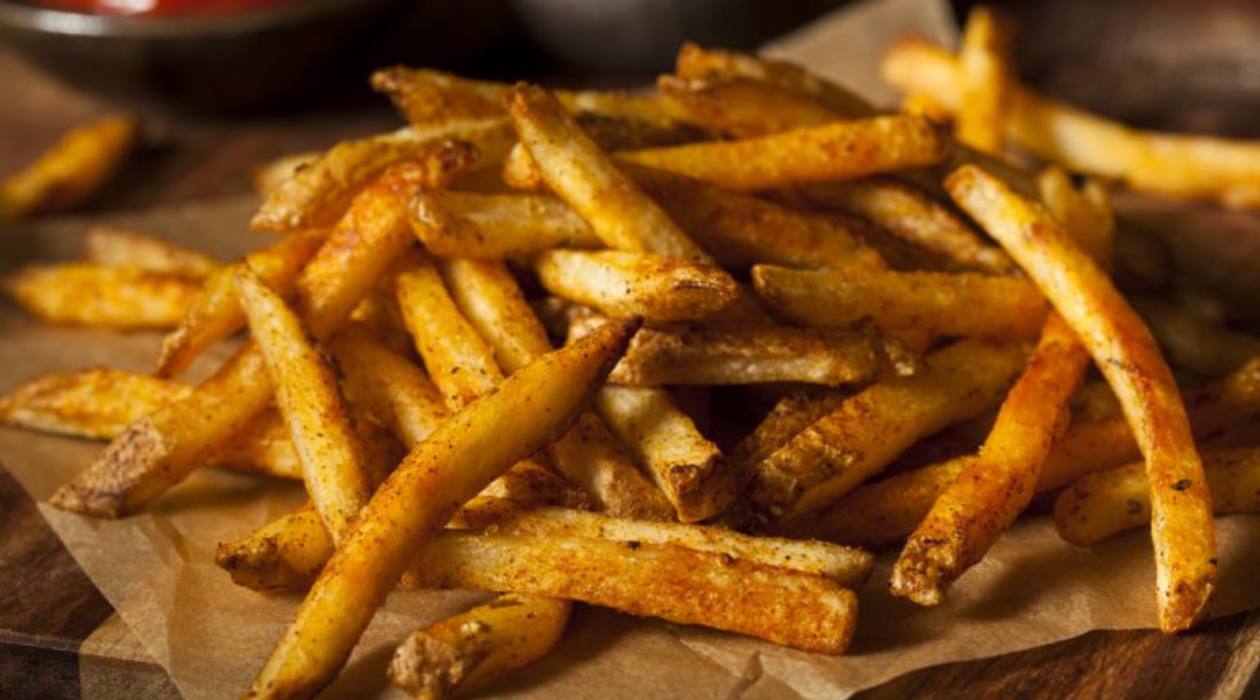


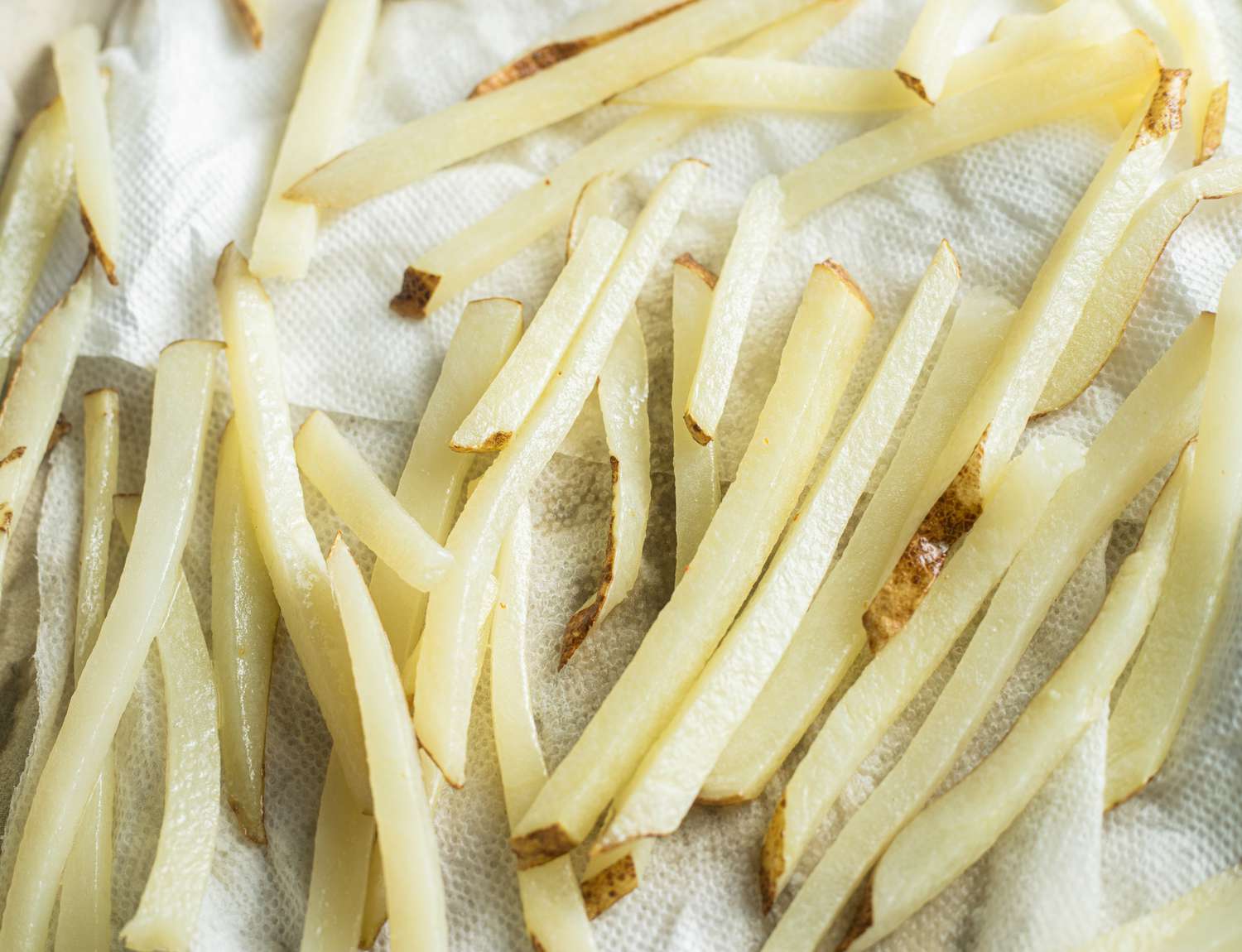


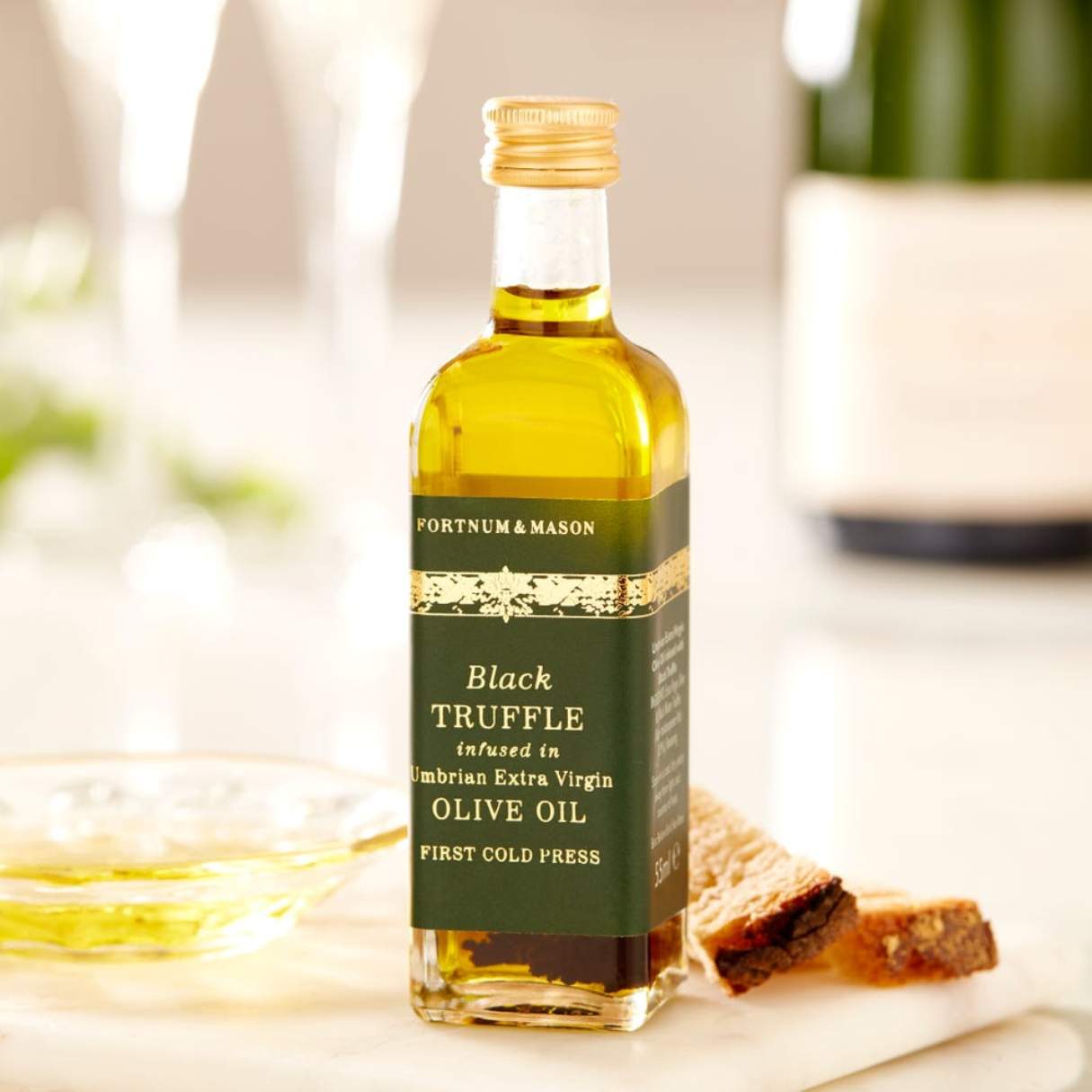


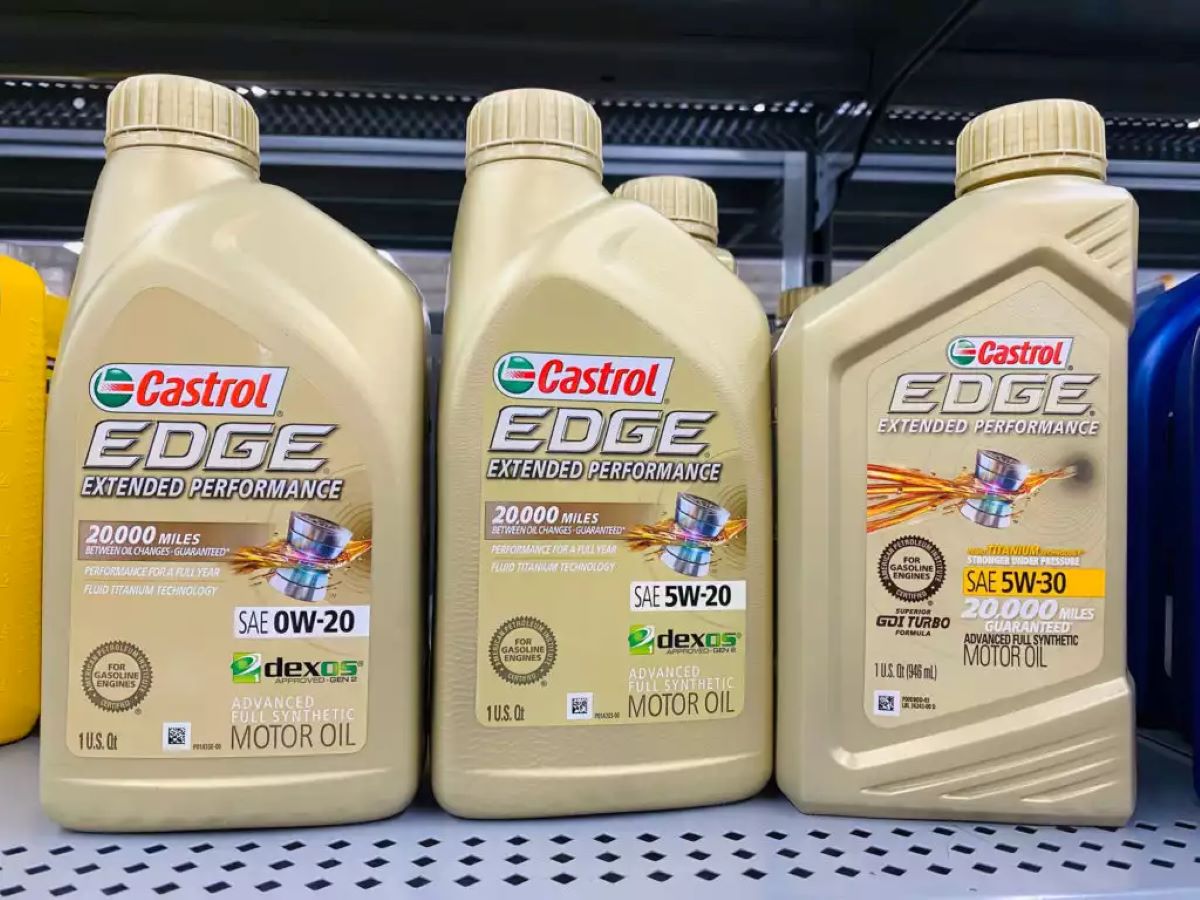
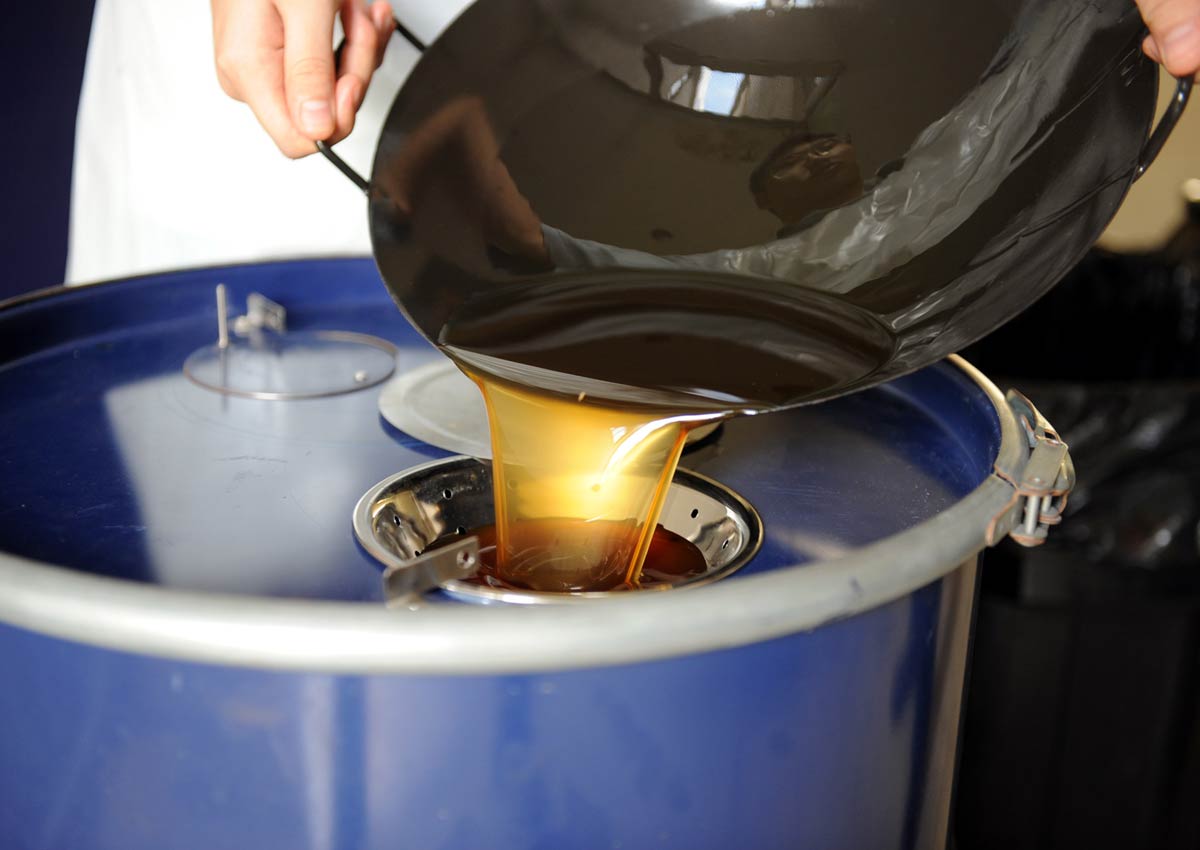
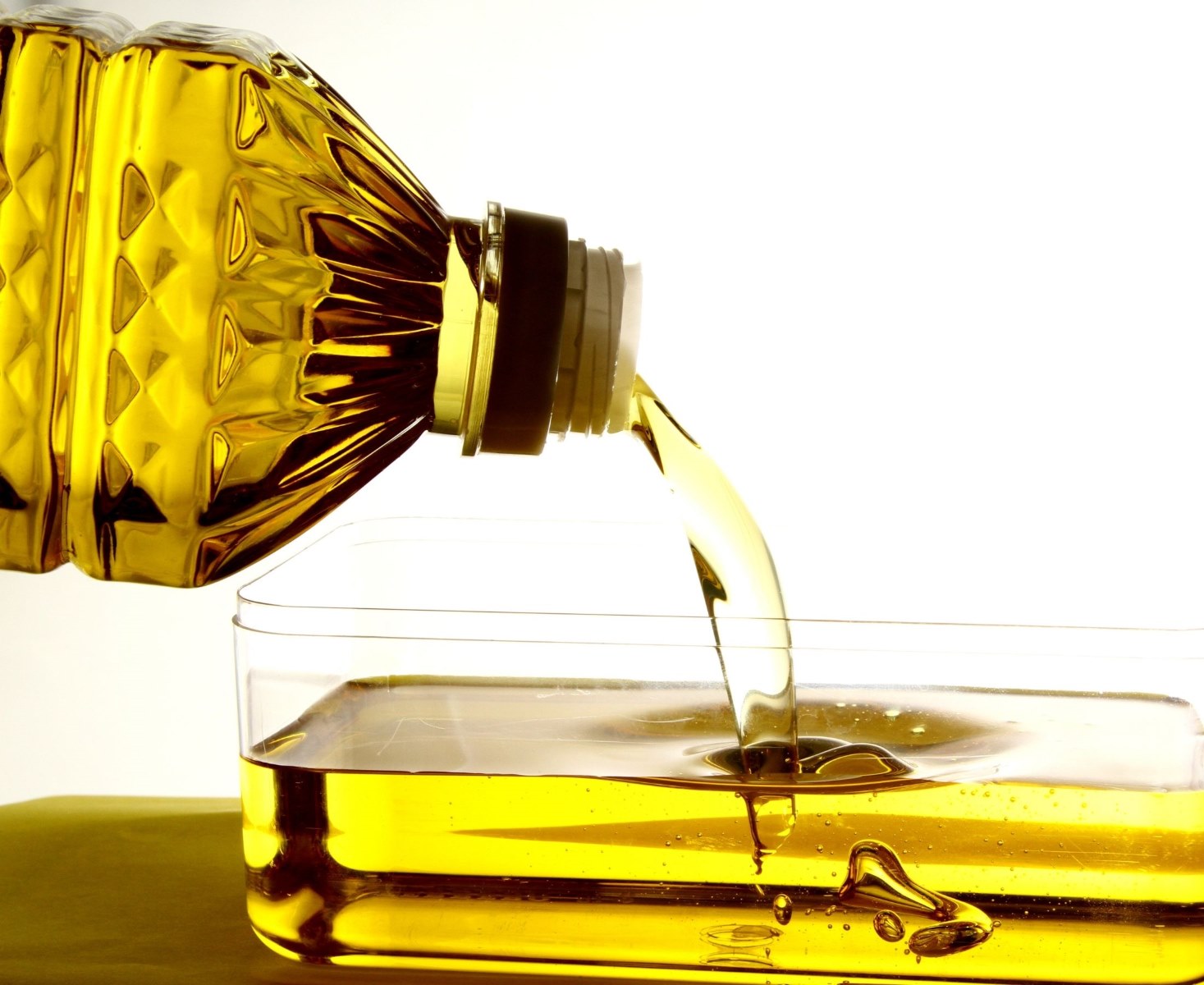

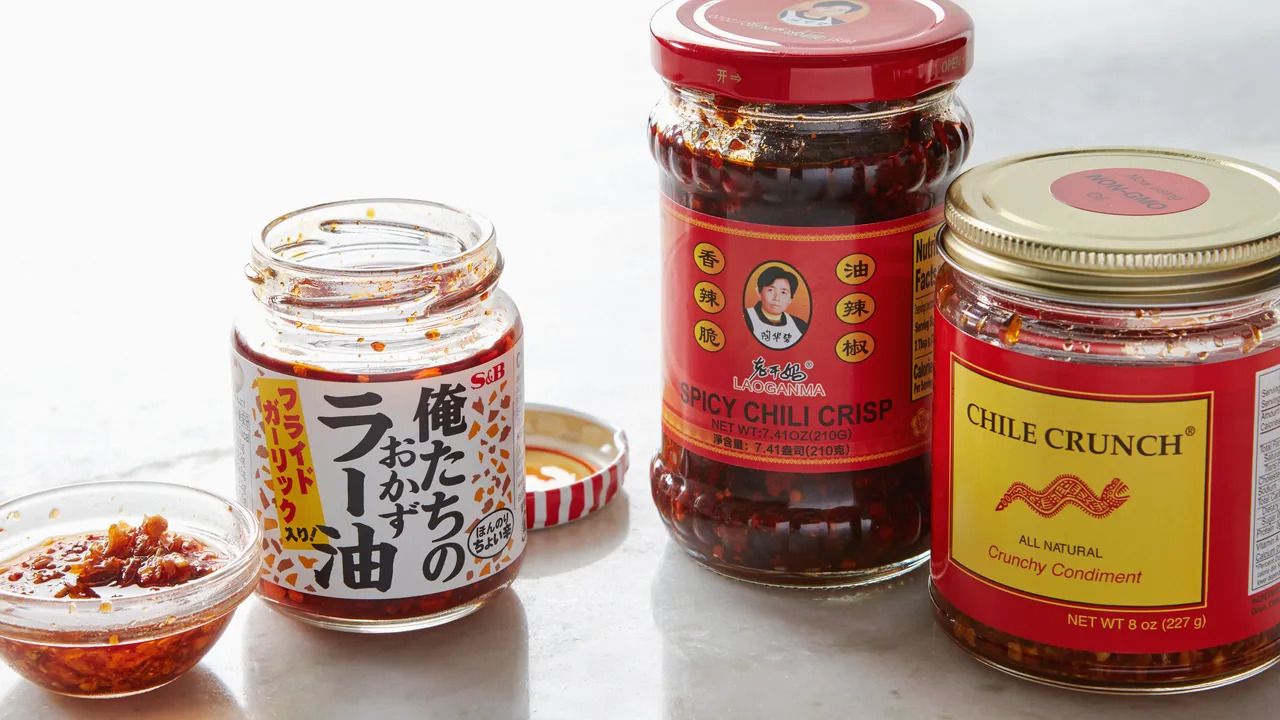

0 thoughts on “How To Store Fry Oil”